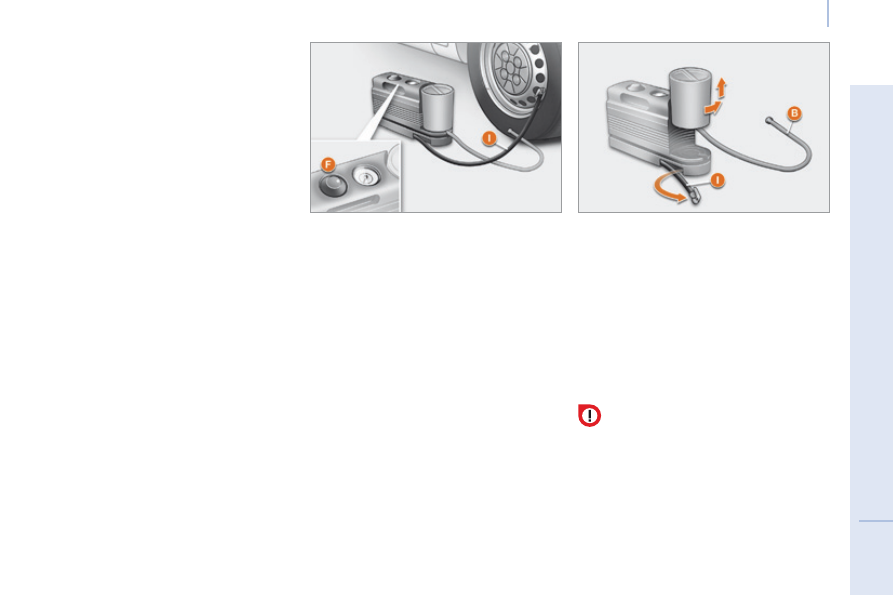Peugeot Bipper (2015 year). Instruction - part 11

159
9
QUICK HELP
Changing a wheel
Bipper_en_Chap09_aide-rapide_ed02-2014
- If a pressure of at least 1.5 bars is not
reached within 5 minutes:
● disconnect the compressor from the
valve and from the 12 V accessory
socket,
● move the vehicle forward by
approximately 10 metres to distribute the
filling fluid inside the tyre,
● then repeat the inflation operation.
- If a pressure of at least 1.8 bars is not
reached within 10 minutes:
● stop the repair procedure; the tyre has
suffered too much damage and cannot
be repaired,
● contact a PEUGEOT dealer or a qualified
workshop.
- If the tyre has been inflated to a pressure
of 3 bars, set off again immediately.
After driving for approximately 10 minutes,
stop and check the pressure of the tyre
again.
Adjust the tyre pressure if necessary and
contact a PeugeOt dealer or a qualified
workshop as soon as possible.
You must inform the technician that you
have repaired the tyre using the temporary
puncture repair kit and show him its
instructions.
Checking and correcting the pressure
For checking and correcting the pressure of
a tyre, use the compressor as follows:
- disconnect the pipe I,
- connect it directly to the tyre valve,
the cartridge will then be connected to
the compressor and the sealant will not be
injected.
Replacing the repair cartridge
Disconnect the pipe I.
turn the empty cartridge anticlockwise and
lift it.
Insert the new cartridge and turn it
clockwise.
Reconnect the pipe I and connect the pipe B
to its location.
the repair cartridge contains ethylene-
glycol, a product which is harmful if
swallowed and which causes irritation to the
eyes.
Keep this product out of reach of children.
After use, take the cartridge to a PeugeOt
dealer or to an authorised waste disposal
site.
If the tyre has to be deflated:
- connect the pipe I to the tyre valve,
- press the yellow button, located in the
centre of the switch F on the compressor.